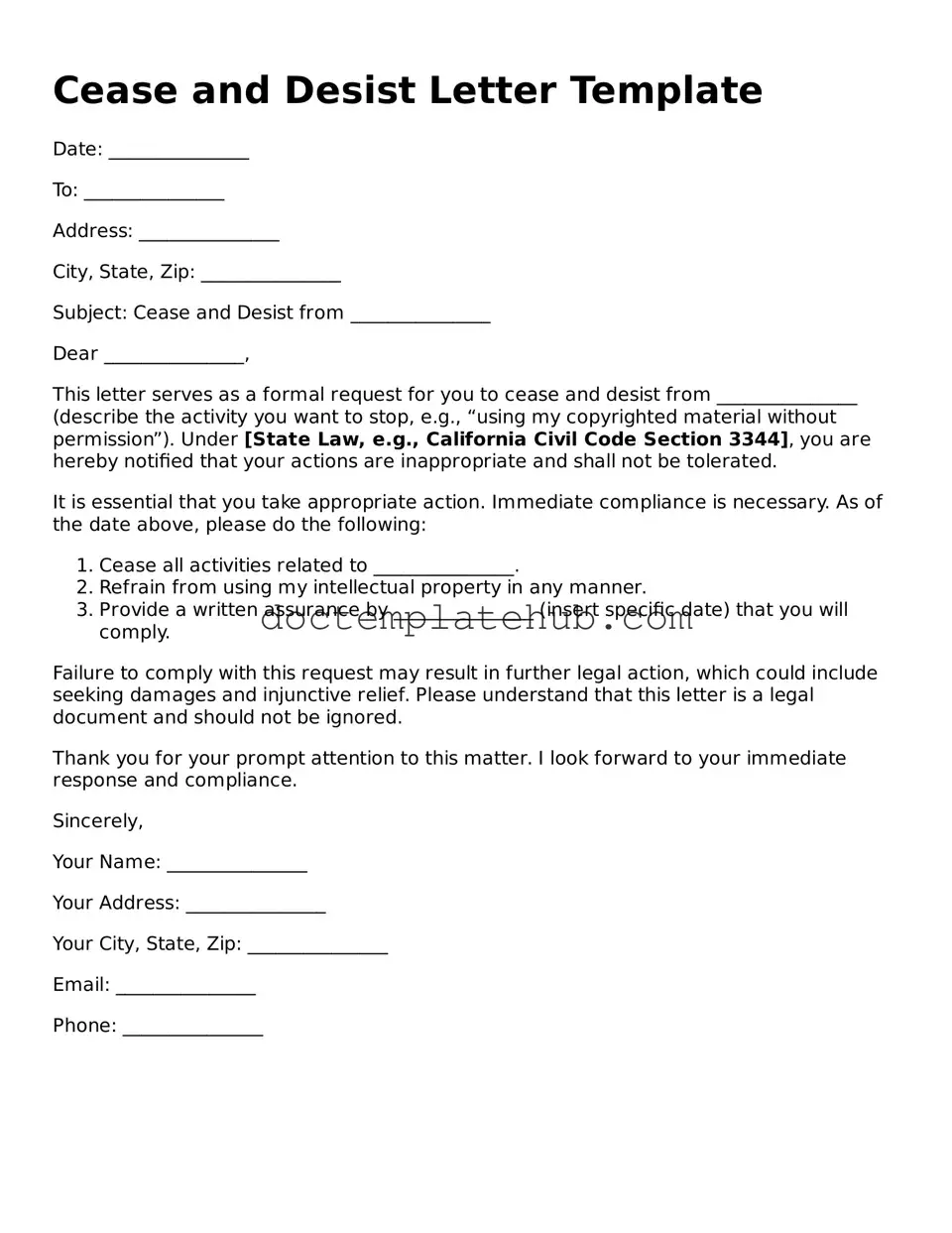What is a Cease and Desist Letter?
A Cease and Desist Letter is a formal request for an individual or organization to stop an activity that is believed to be infringing on someone's rights or causing harm. This letter serves as a warning that legal action may follow if the behavior does not change. It typically outlines the specific actions that are objectionable and provides a timeline for compliance. While it does not constitute a lawsuit, it can be an important step in resolving disputes without escalating to court.
When should I send a Cease and Desist Letter?
You should consider sending a Cease and Desist Letter when you believe that someone is violating your rights, such as intellectual property rights, privacy rights, or contractual obligations. If you notice unauthorized use of your copyrighted material, trademark infringement, or harassment, a Cease and Desist Letter can be an effective first step. It is often advisable to try this approach before pursuing more formal legal action, as it may lead to a resolution without the need for a lawsuit.
How do I write a Cease and Desist Letter?
Writing a Cease and Desist Letter involves a few key components. Start with a clear statement of who you are and your relationship to the issue at hand. Next, describe the specific actions that are causing concern and why they are objectionable. Be sure to include any relevant evidence or examples to support your claims. Finally, state your demands clearly, including a deadline for compliance. It's important to maintain a professional tone, as this letter can be used in future legal proceedings if necessary.
What happens if the recipient ignores the Cease and Desist Letter?
If the recipient ignores the Cease and Desist Letter, you have several options. You may choose to follow up with a more formal legal action, such as filing a lawsuit. Before taking that step, it might be wise to consult with a legal professional to assess your situation and determine the best course of action. Ignoring the letter does not mean the issue will go away; it may escalate the situation and lead to further complications. Being proactive can often lead to a more favorable outcome.
